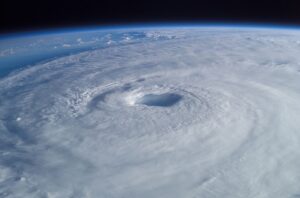 As Hurricane Florence approaches the Carolina coastline, we would like to extend our deepest well-wishes and provide helpful information to keep residents and recovery workers in the affected area safe during such a chaotic time.
As Hurricane Florence approaches the Carolina coastline, we would like to extend our deepest well-wishes and provide helpful information to keep residents and recovery workers in the affected area safe during such a chaotic time.
Hurricane Florence was recorded as having sustained winds of 130 mph, and is expected to reach the Carolina coast as early as 8 AM today. Areas of South Carolina are expected to receive more than 20 inches of rain with the risk of flash flooding exceeding 50 percent.
President Trump has issued a state of emergency for North and South Carolina and Virginia. More than one million people living along the coast have been ordered to evacuate.
The National Weather Service encourages those evacuating to secure their homes. Make sure all windows are covered, preferably with storm shutters, or board them with exterior grade plywood. Residents should also stay informed by tuning into appropriate TV and radio stations that offer up-to-date information on the storm. If you’re not evacuating you should seek shelter in a small interior room, putting as many walls between you and the outside as possible and stay away from windows and glass doors.
The ready.gov/hurricanes website includes a very helpful breakdown of where you should be in your hurricane preparations 36 hours before landfall, 18-36 hours before landfall, 6-18 hours and then in the hours before, during, and after a hurricane.
Such a storm will bring with it catastrophic damage, life-threatening conditions, and the need for disaster relief workers.
The Red Cross is preparing to help as many as 100,000 people and already more than 700 disaster workers are in route to the region. You can help by donating either financially or by donating blood.
With the expectation of flooding and property damage, cleanup activities involve hazards that can cause serious injuries or death. Hazards range from toxic substances in the water to burns and electrocution from fallen powerlines to falls and slips from uneven and/or wet surfaces. Hurricane Harvey resulted in $125 billion worth of damage and resulted in more than 31,000 government relief workers being sent to the area. Please read OSHA’s Fact Sheet with a list of protective measures disaster recovery workers should heed when heading into recovery zones. This and other material to support safe practices in rebuilding can be found in the Partnership Campaigns and Resources section of our BCSP Partners webpage.
We sincerely hope everyone in the affected region stays safe and we offer our deepest gratitude to those individuals traveling into the storm to aid those affected by Hurricane Florence.
